Master The Art Of Slow Living Soup Making || How To Make Delicious Soup Every Time
The art of slow living soup making is a valuable skill to have in the kitchen. Soup is a very well balanced and nourishing meal. It is classic comfort food, that somehow has the ability to nourish not only the body but the soul as well.
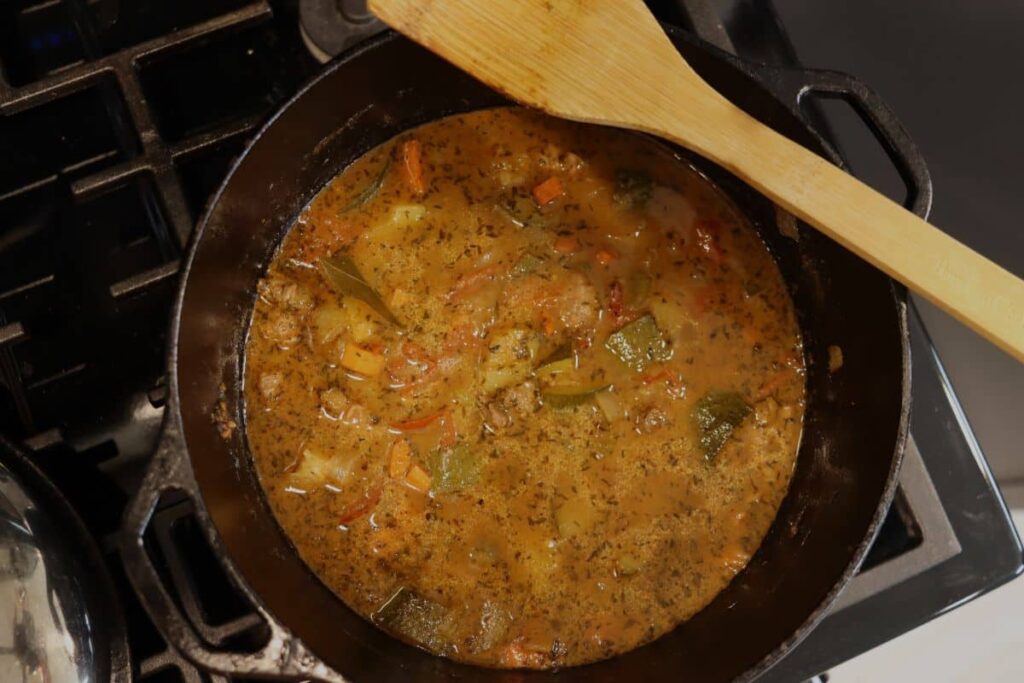
Perhaps this is because the soup making season falls during the colder months of the year. And it is during those months that our soul yearns to slow down, snuggle in early, and indulge in a little extra self care.
A big pot of soup brewing on the stove all afternoon makes the whole house smell amazing. And when the time comes to sit down and enjoy a steamy bowl of it’s tasty, nourishing liquid nutrition, it’s feels like an incredibly indulgent act.
It fits in well with the slow living lifestyle, as it’s preparation is very conducive to a meditative practice. And it utilizes many ingredients that are likely already in your pantry, making it a very sustainable meal.
I highly recommend making it a regular part of your weekly routine, throughout the fall and winter season, to cook a big pot of soup . It is a great way to spend an hour or so in the kitchen on a chilly afternoon.
There is a simple roadmap that you can follow to successfully cook a great pot of soup every time. It starts with creating the foundation of your soup. Followed by creating it’s broth, developing it’s body, melding it’s flavors, and, if desired, garnishing each serving.
But before you can embark on a soup making journey, you must first choose the type of soup that you want to make.
Choose The Type Of Soup You Want To Make
If you truly want to master the art of slow living soup making, you will need to learn the different types of soup that you can make.
There are 3 categories of soup; brothy, chunky, and creamy. If you are a soup lover than it is probably not necessary for me to go over the details of each of these categories. But, for those who are not as familiar with this incredible food, I’d like to discuss each category just a bit.
BROTHY SOUP
Chicken soup, vegetable soup, miso soup, and French onion soup are all examples of brothy soup.
Brothy soups are the lightest of all the soups you can make. They are made with a clear broth base, and most often have a high broth ratio.
There are a large variety of brothy soups, as is the case with all types of soup. But most often they are at least 50% clear broth.
CHUNKY SOUP
Black bean soup, Italian wedding soup, Manhatten clam chowder, and Creole gumbo are all examples of chunky soup.
The broth to body ratio in a chunky soup is the opposite to that of a brothy soup. This soup typically has a clear broth like a brothy soup. But it has more solid ingredients, such as vegetables, meat, pasta, and rice, than it has broth.
It is a more filling option than a brothy soup.
CREAMY SOUP
Creamy soups, like chunky soups, often have more body than broth. Although, there are many creamy soups that have very little body at all.
They are the most satiating of all of the types of soup. Because their broth is thickened and has cream added to it’s base.
After working in the restaurant industry for more than 40 years, I feel confident saying that this is the most popular of all the soup categories.
New England clam chowder, broccoli cheddar soup, potato soup, and tomato soup are all examples of creamy soup.
Create The Foundation For Your Soup – Slow Living Soup Making
Once you’ve chosen the type of soup that you want to make, you are ready to utilize the roadmap to slow living soup making that I referenced above.
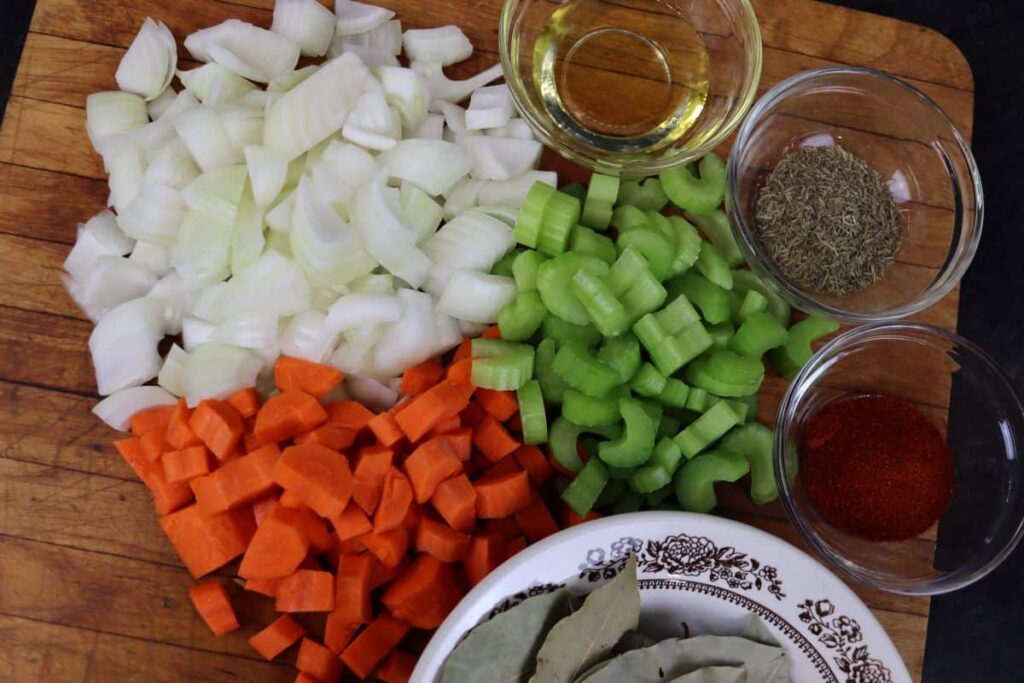
The first thing that you will do to start the building process of putting together a great pot of soup is to create it’s foundation.
The foundation of a great pot of soup consists of 3 things; fat, aromatics, and seasonings. Let’s talk a little bit about how to choose each one of these foundational soup building blocks.
CHOOSE THE FAT YOU WILL USE FOR YOUR SLOW LIVING SOUP MAKING
In my kitchen, olive oil and butter are the two fats that I use most often when making a big pot of soup. And I decide which of those fats I want to use by considering what will taste best with the type of soup I’m making.
Butter, for instance, works really well with lentil soup and broccoli cheddar soup. I use it to make these soups when I want it’s rich buttery flavor to be imparted into my dish. Butter is often the fat used in soups of French origin.
However, I most often reach for olive oil when making a pot of soup. It is, in my opinion, the most versatile fat for soup making.
Although, when making an Asian soup both coconut oil and sesame oil are really the better choice.
Asian flavor profiles have less similarities to the European cuisines that I am so familiar with. And when making something of Asian origin it is necessary to learn what ingredient is commonly used in that cuisine, winging it does not work to your benefit.
CHOOSE THE AROMATICS YOU WILL USE FOR YOUR SLOW LIVING SOUP MAKING
The next stop on the slow living soup making journey is to choose the aromatics for your soup.
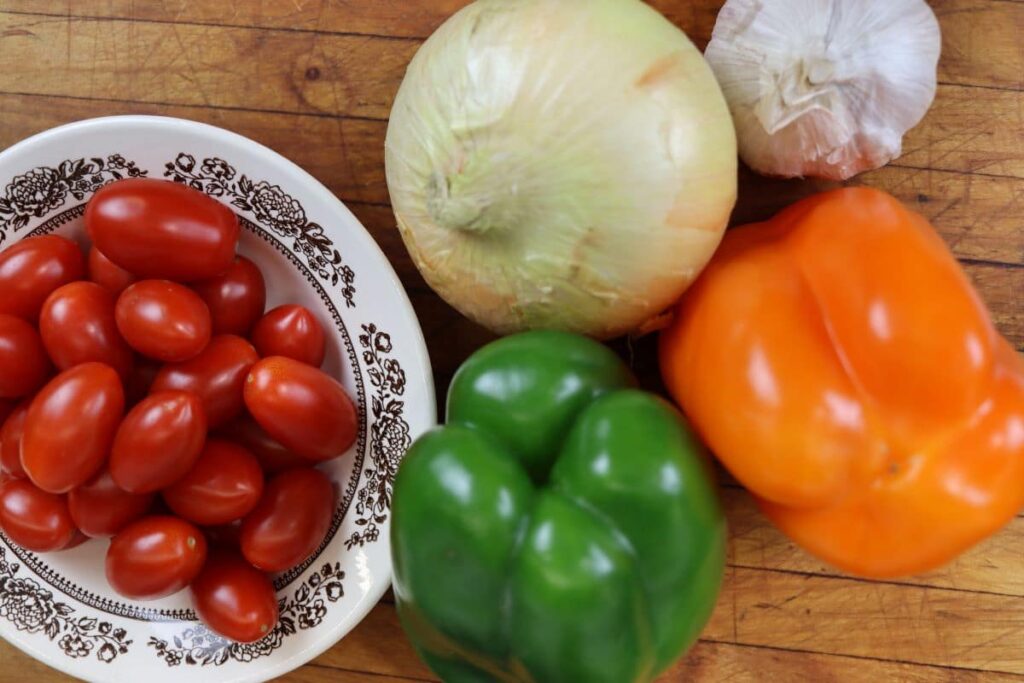
Aromatics are vegetables that provide a deep, rich, well rounded flavor to your soup. This flavor, along with an appetizing aroma, is released from them when they are heated or crushed.
Aromatics include things like garlic, ginger, chilies, celery, peppers, and onions. In my kitchen, because of the types of soup I make most often, I tend to use what is called a mirepoix more than other aromatics.
A mirepoix is a mixture of 2 parts onion, 1 part carrots, and 1 part celery, cooked until translucent, and then seasoned with garlic.
Many Latin and Spanish soups use what is called a sofrito as the aromatics for their soup. A sofrito consists of peppers, tomatoes, onions, garlic, and often cilantro. Hot chilies are added to a sofrito when making a spicy soup.
And if you are making an Asian soup, choosing shallots, ginger, and garlic as your aromatics will serve you well.
Hot chilies are added to the aromatics of Asian soups to make them spicy as well. Chilies of Asian origin are used in these soups, as opposed to the chilies of Latino and Spanish origin that are used in soups of that same origin.
CHOOSE THE SEASONINGS YOU WILL USE FOR YOUR SLOW LIVING SOUP MAKING
The final decision you will need to make to build the foundation of your soup is what seasonings you are going to use.
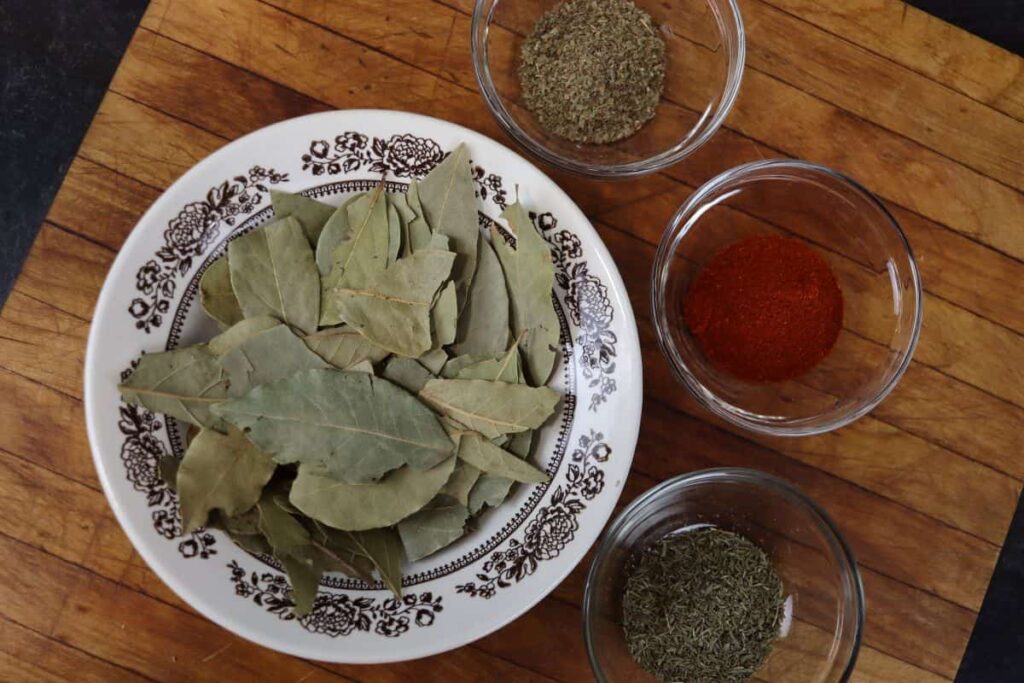
This can be a little overwhelming for someone who is not an experienced cook. And for that reason, I recommend that you browse a dozen or so recipes for the type of soup that you want to make to see what seasonings are being used to flavor it most often.
Then stick with just a few of them to start. This will help to keep from creating a broth that has no primary flavors. But rather has a sort of muddy indistinct flavor.
Look to seasonings that are common in the cuisine that the soup you are making originated in.
Would you like to save this post for later?
Creating The Broth For Your Soup – Slow Living Soup Making
The broth that you use for your soup is very important, as it is influences the taste of the soup more than any other ingredient.
I will, and have, referred to the liquid element of soup in this post as broth. It is a common term that is often used as sort of a blanket description for the liquid body of soup among the public.
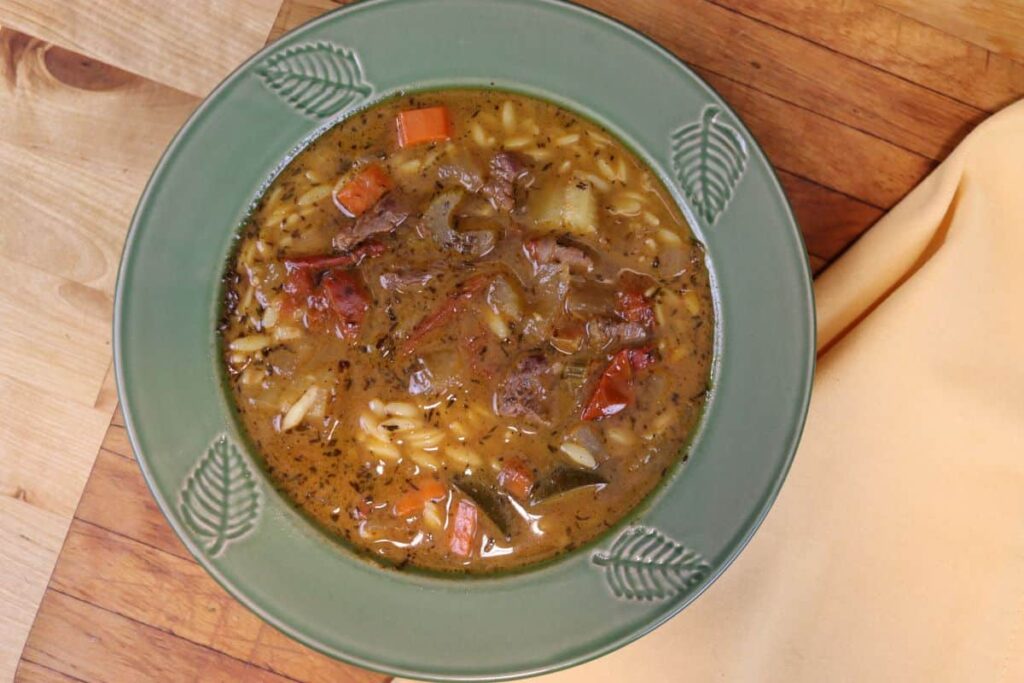
BROTH VS STOCK
However, for your own knowledge, note that there is a distinct difference between broth and stock. And if you are going to make your own, it is important that you understand the difference.
A stock is made by simmering down bones. And a broth is made by doing the same with meat and vegetables. Stocks are generally thicker and more flavorful than broths. They impart much of their own flavor to a soup. Whereas, broths tend to allow the other flavors in the pot to come through more in the final product.
If you are going to purchase a broth for your soup, I recommend using a bouillon paste. The premade liquid broths, bouillon cubes, and powdered boullions will not give as desirable a flavor to your soup as a paste.
Bouillon paste is considerably more expensive. But the end result that it provides is well worth the extra cost.
You will need to decide what flavor ‘broth’ you are going to use for your soup. There are many to choose from. The most common flavors include; vegetable, chicken, beef, and seafood.
OTHER LIQUIDS
Other liquids, in addition to broth, can be added to a pot of soup to enhance it’s flavor. A can of diced tomatoes, along with it’s juice, makes a nice addition to a pot of minestrone soup. The liquid that is drained off of beans after you’ve cooked them works well in bean soups.
Full fat coconut milk is the perfect addition to many Asian soups. And heavy cream is most often the secondary liquid that is used to make the broth for a creamy soup.
USING DAIRY IN SOUP
If using heavy cream, or other dairy products, they should be added later in the soup making process so that they don’t break down from being exposed to too much heat. Simply continue making your pot of soup without quite enough broth in it. And then during the last 15 minutes of cook time, add the heavy cream and thicken the broth to the desired consistency.
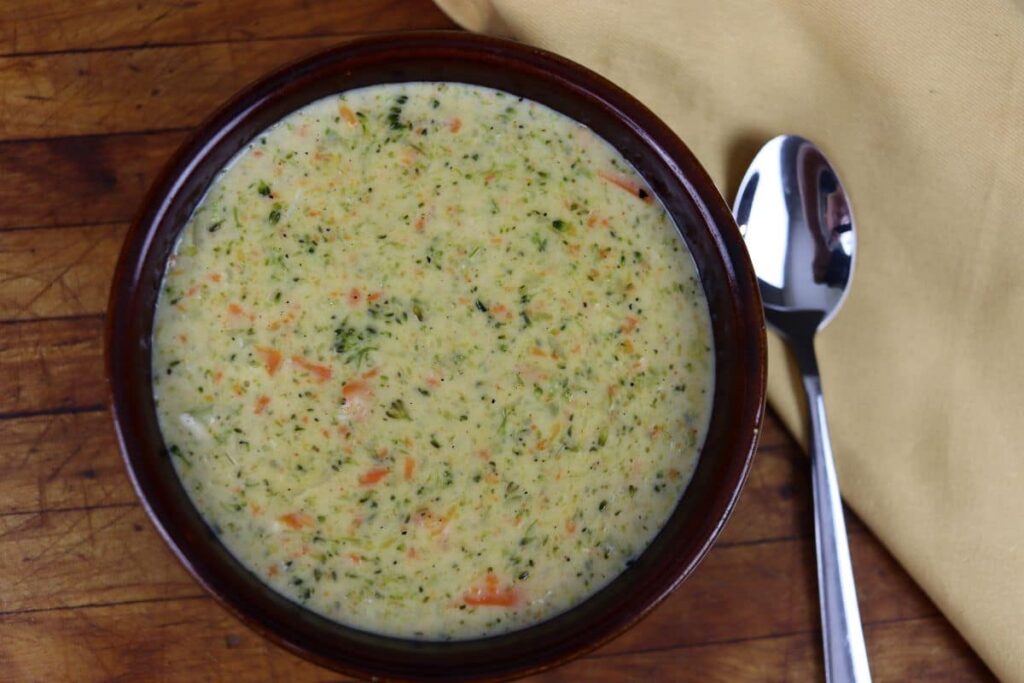
You will find instructions all over the web for the amount of broth that you need to add to your pot of soup. Generally, they seem to be calling for about 1 cup of liquid for each person you are trying to feed.
In my opinion, this is not necessarily the best way to determine how much broth to add to your soup. I usually start with this measurement. And then after I have added the other ingredients to my soup pot I adjust the amount of broth to make the soup as brothy as I want it to be.
Developing The Body Of Your Soup – Slow Living Soup Making
Once you’ve built the foundation of your soup, there is just one more hands on step on your slow living soup making journey. And that is to create the body of your soup.
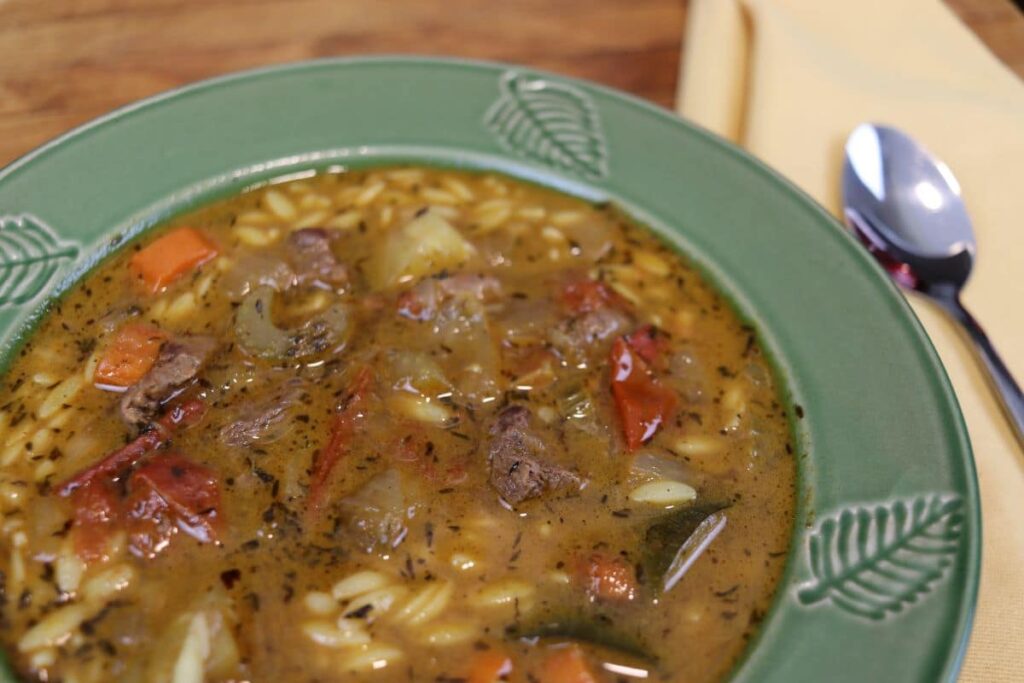
This is where you will choose the meat and vegetables that you want in your soup. And it is also where you will add pasta or rice to your soup if you want it to be part of the body.
ADDING MEAT AND SEAFOOD TO YOUR SOUP
The meat for your soup will be best if you brown it before you add it to the pot. If you want to add meat at this point brown it lighlty in a separate pan and then put it in the pot.
It is up to you whether or not you include the fat and brown bits that are left in the pan from browning the meat. I prefer to add them. They have great flavor. But it does put additional fat in your soup.
Note that if you are making a seafood soup it is not really necessary to brown your seafood first.
ADDING VEGETABLES TO YOUR SOUP
It is best to add raw vegetables to your soup, as they will impart their flavor to the broth as they cook. The type of vegetables that you choose will vary greatly from one pot of soup to another.
If you’re making a particular type of soup, you will add the vegetables that are most commonly used in that type. This is another point in your journey where you will need to browse a few recipes online to see what others are using in the type of soup you want to make.
But know that you can toss just about any vegetables you want in the pot at this point, and they will likely make a delicious pot of wholesome, nutritious soup. It is a great time to clean the refrigerator out of vegetables that need to be used up.
If you are adding beans to your soup it is important that you precook them, as they will not cook down completely in a reasonable amount of time. And if adding greens, you will want to add them later after the soup has finished cooking. Add them in, and cook for 5-10 minutes longer to meld them into the soup.
ADDING PASTA OR RICE TO YOUR SOUP
Pasta and rice should be cooked separately as well. If you add them directly to the pot they will impart more starch than you want to have in your soup.
Additionally, if you have leftover soup you can keep your pasta and rice in a separate container in the refrigerator. This will keep it from mushing out when you reheat your soup. Then simply add it to each bowl when you reheat it.
Melding The Flavors Of Your Pot Of Soup
At this point, you’ve traveled through the hands on parts of your slow living soup making journey. And it is time to let your soup pot do it’s magic.
You can leave it to sit on the stove, on a very low simmer, to meld all of the flavors together. Most soups will be ready to eat in about an hour. So, if you need to serve it at that point you can.
However, if you are able, it is beneficial to allow your soup to sit at a low simmer for 3 or 4 hours. The flavors will continue to meld together during this time and your soup will be all the better for it.
Be sure to stir it every so often. And give it a taste so that you can adjust the seasonings to your liking.
When you feel you need to add a seasoning to the pot go ahead and toss it in. But know that you will have to let the soup simmer for another 10-15 minutes before you can taste it again to see if you’ve gotten it just right. The seasonings will need time to disburse through the broth.
Adding A Garnish To Your Soup
Once you feel your soup is just right and ready to serve you can put aside this roadmap to a slow living soup making journey and sit down and enjoy a steamy hot bowl of your tasty, nutritious creation.
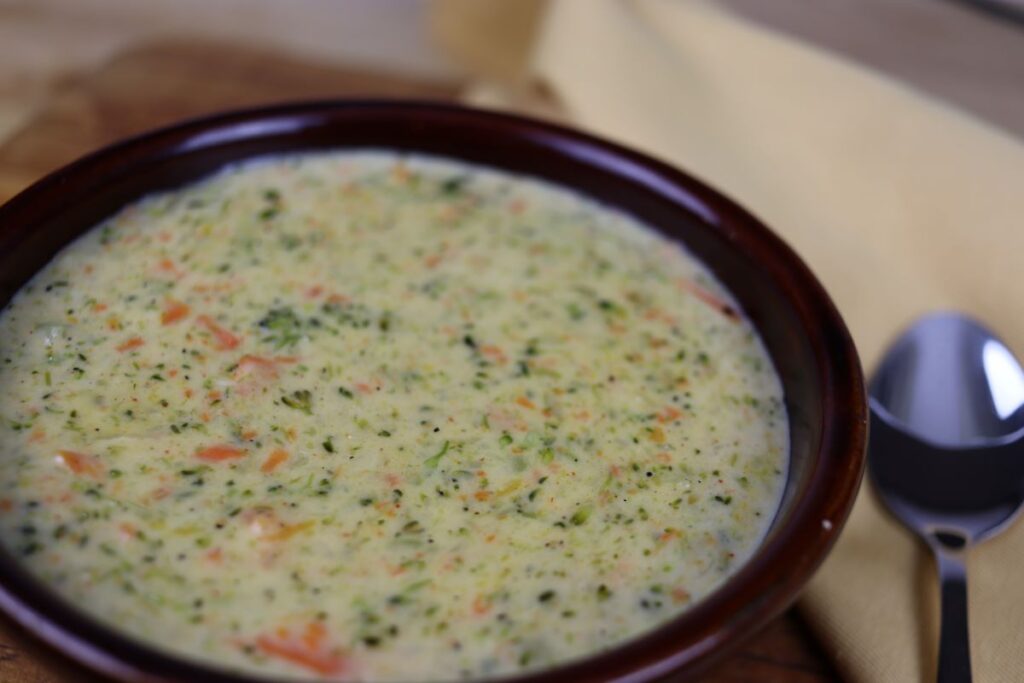
Or, you can add a garnish to each bowl of soup as you serve it. Garnishes are particularly nice when you are looking to add a little eye appeal to your dish.
Here are a few ideas to get your imagination primed to choose garnishes for your soup …
- A dollop of sour cream or yogurt will make your soup a little creamy. And it will add a bit of tang to each bite. It’s particularly good in tomato soup, bean soup, and potato soup.
- Crispy seasoned croutons are a great garnish for chicken soup, minestrone soup, and beef vegetable soup.
- Toasted seeds, such as pumpkin or sesame, make really terrific toppings for many Asian and vegan soups.
- Shredded or crumbled cheese is a great addition to soup as well. I love a bit of crumbled blue cheese atop a bowl of potato soup. And some shredded cheddar is just perfect to garnish a bowl of black bean soup.
- Drizzling a bit of high quality olive oil over a thick cream soup enhances it’s flavor and eye appeal. Add just a little crushed red pepper to that and you’ve got a really attractive bowl of soup.
The garnishes you can use for soup are only limited by the scope of your imagination. So, route through your cupboards and let your imagination go wild.
If you’re unsure about a garnish, but would really like to try it, that’s no problem at all. Simply place a small portion of soup in a side serving sauce dish, top it with the garnish in question, and have a taste.
Recommended For You


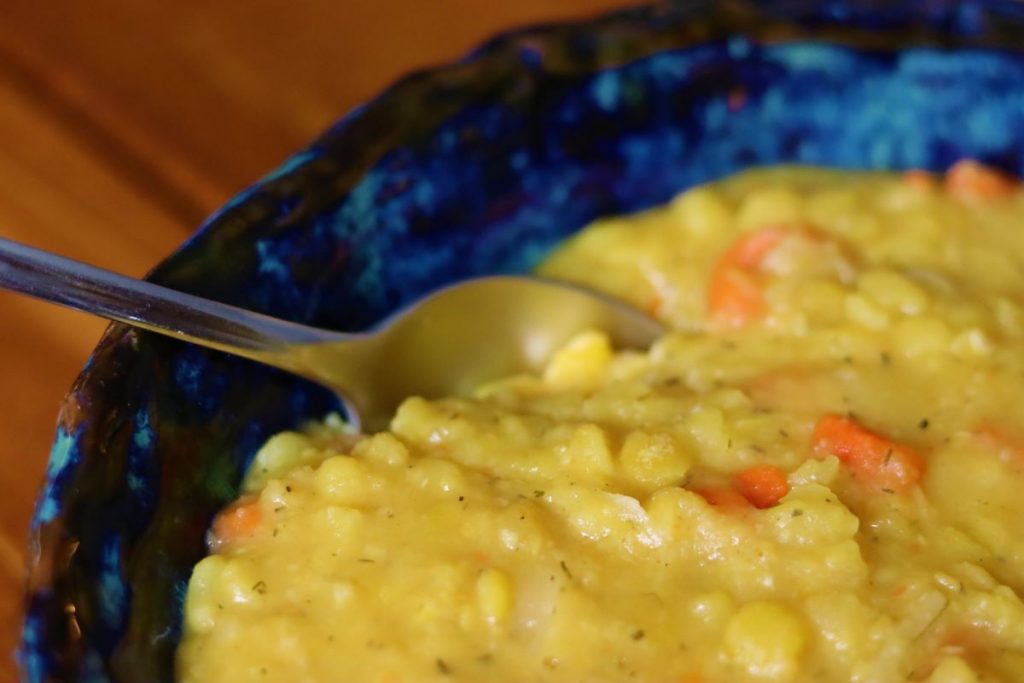
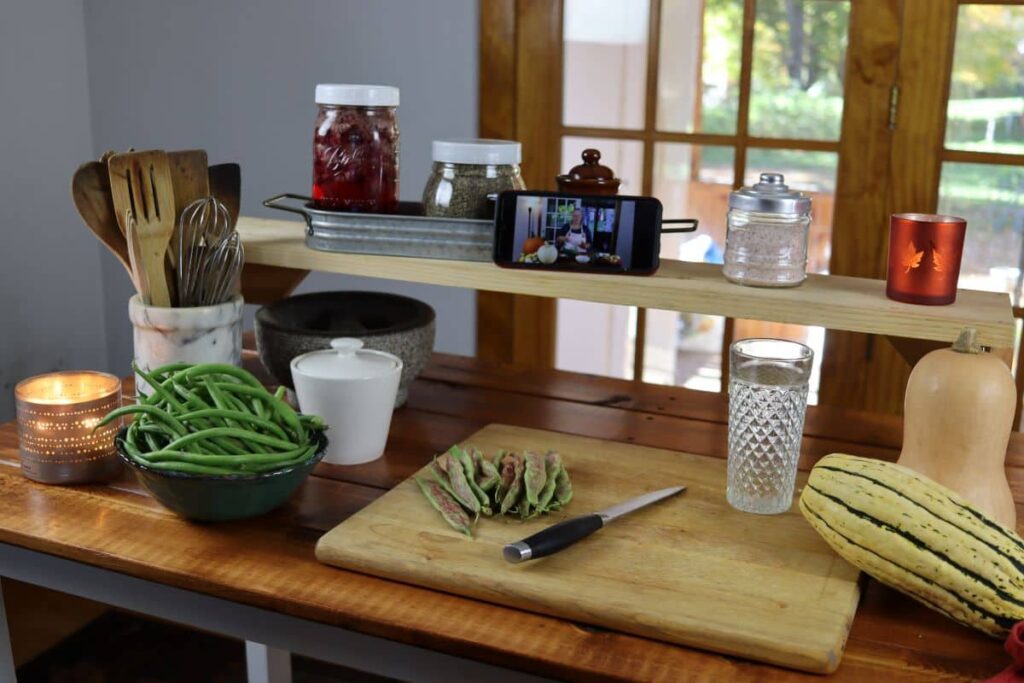
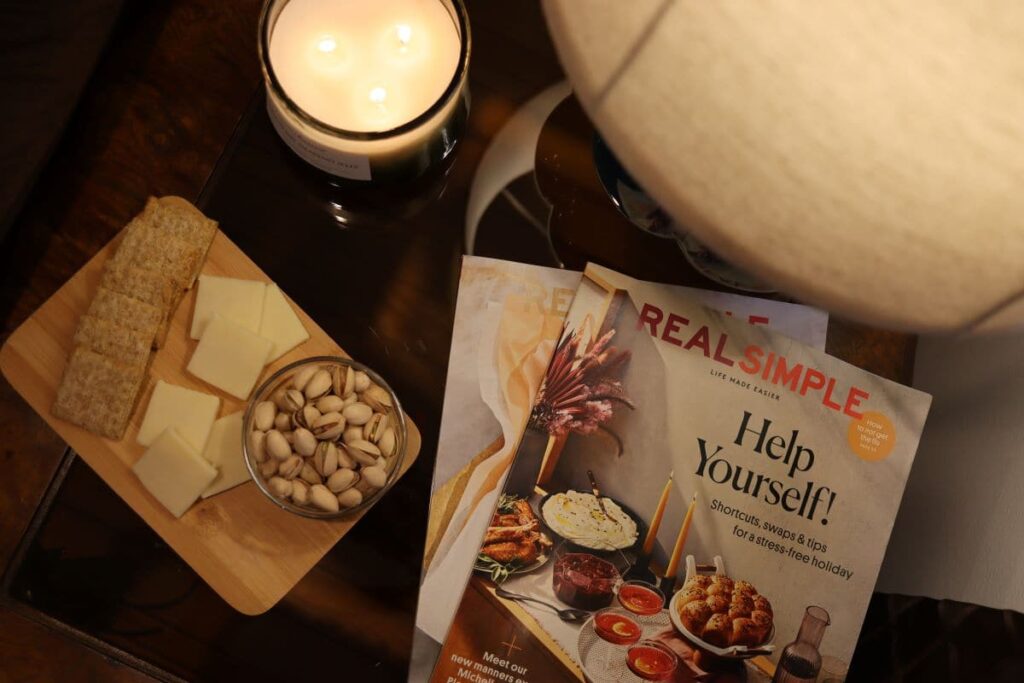

There’s a quiet rhythm to slow soup making — the gentle chopping, the long simmer, the layering of simple, nourishing flavors. It’s not just about the meal, but the process itself. What’s your favorite kind of soup to make when you’re embracing a slower pace?